Canada’s economy is an unmitigated disaster.
Canada has experienced an unprecedented population boom, exceeding even Statistics Canada’s most bullish “high growth” projections:

According to economists at the National Bank of Canada, the country’s population expanded by 1.4 million more people in 2022 than Statistics Canada forecasted in its “median growth scenario.”

An unprecedented rental crisis has emerged in Canada as a result of this population explosion, which has been entirely due to net overseas migration.

Canadian rents are rising at their fastest rate in generations, while the rental vacancy rate has fallen to a historic low.
The unprecedented influx of migrants has also exceeded Canada’s productivity capability, leading to “capital shallowing”:
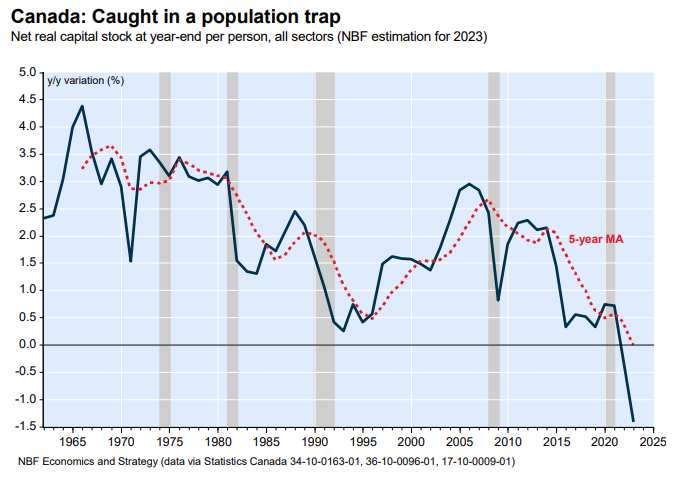
Business investment, infrastructure, and housing have failed to keep up with Canada’s rapid population increase, resulting in plummeting productivity.

As a result, Canada’s real GDP per capita is predicted to have declined for 19 of the previous 21 months.
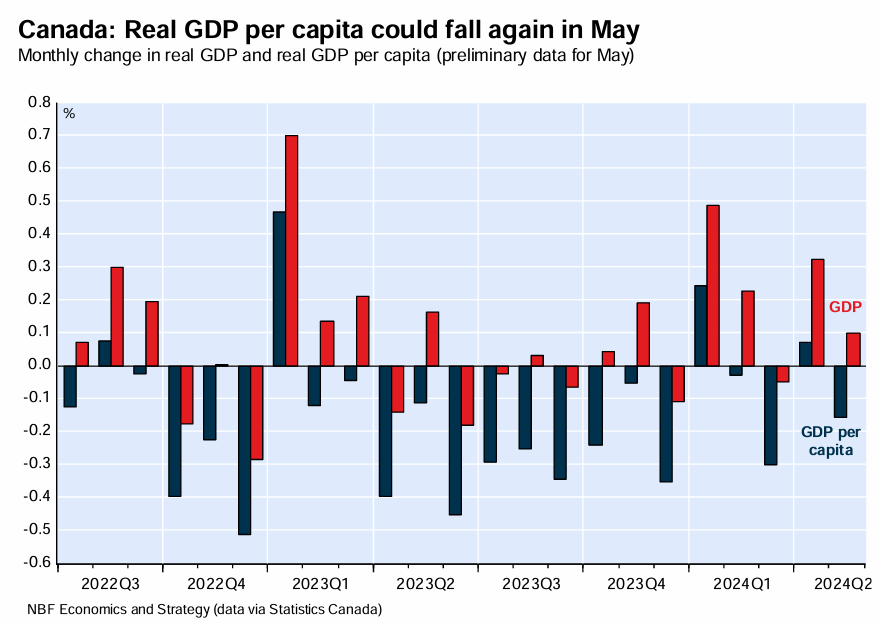
Canada’s real per capita GDP has also seen little growth from a decade ago:

The influx of migrant labour into Canada has also oversupplied the economy with workers, with 13 out of 15 industries experiencing a decrease in output per employee between Q3 2022 and Q1 2024:
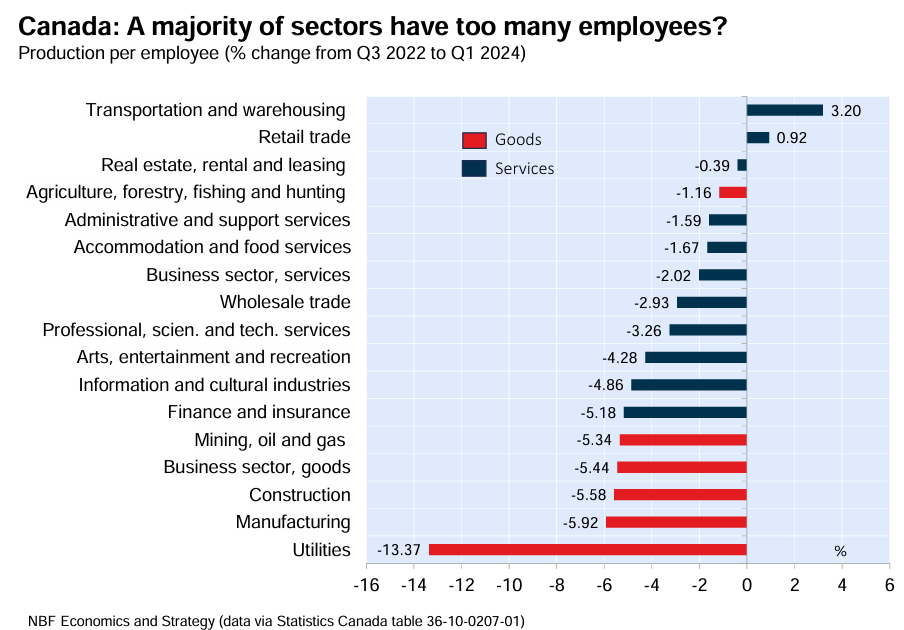
Canada’s unemployment rate has risen to 6.4% as of June, up 1.6% from its July 2022 low. If the participation rate had not fallen, the increase in unemployment would have been far worse.
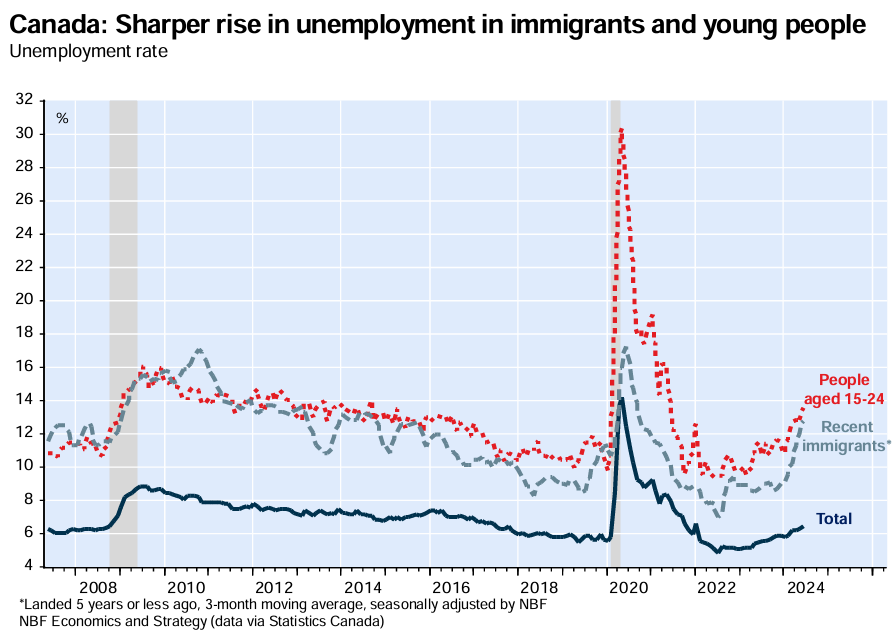
The dismal labour market is especially harmful to people entering the workforce.
According to National Bank of Canada economists, students are experiencing the lowest employment rate since 1998.
New migrants are also struggling to enter the workforce, with their unemployment rate rising to 12.7% in June on a 3-month moving average basis, for a total increase of 5.8 percentage points since the trough.
“Job creation hasn’t kept pace with the population’s meteoric rise for some time now”…
“For new immigrants, the increase in the unemployment rate since the trough in 2022 (+5.8 percentage points) is already equivalent to the increase recorded during the global financial crisis of 2008-2009”.
“The situation for this population is not likely to improve. Job vacancy rate in sectors that tend to absorb more newcomers has fallen from 6.6% in 2022 to just 3.2% last April, the lowest level since 2017”.

While the situation is less severe in Australia, there are obvious parallels with Canada.
In 2023, Australia’s population grew by 651,200 thanks to a record net overseas migration of 547,200:
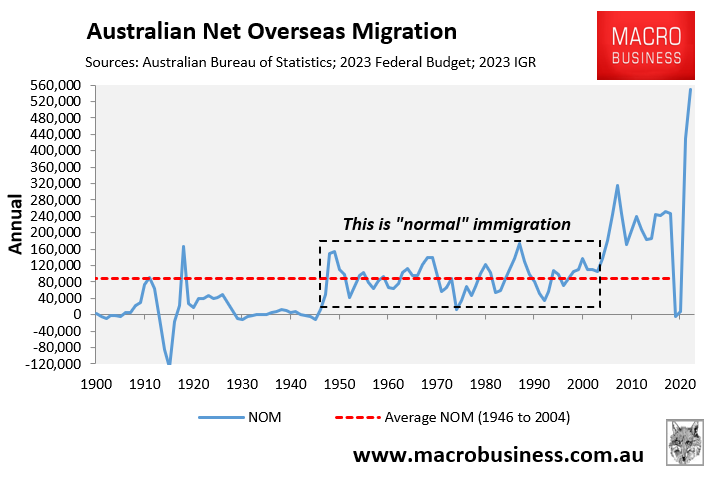
Australia welcomed just under one million net overseas migrants in the calendar years 2022 and 2023, more than tripling the forecasts of the Albanese government’s first federal budget in October 2022:

Source: October 2022 Federal Budget
The massive increase in net overseas migration has produced a historical disparity between housing supply and population demand.

As a result, Australia’s rental inflation increased by 7.4% in the year to May.
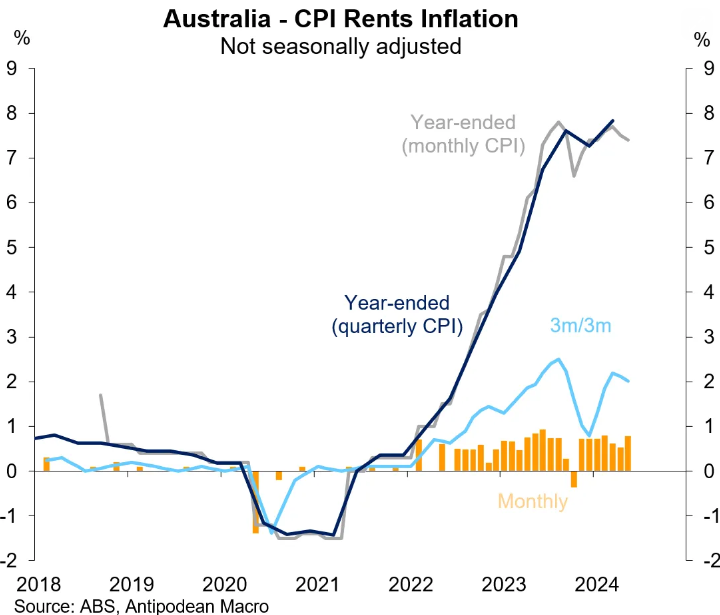
However, if the federal government had not extended Commonwealth Rent Assistance, Australian rental inflation would have risen by 9.3%, comparable to Canadian rental inflation.
Like Canada, decades of excessive immigration have resulted in “capital shallowing” and diminishing productivity as the population has grown faster than business investment, infrastructure, and housing.

As a result, Australia’s per capita GDP growth has slowed, and the country is currently experiencing a prolonged per capita recession.
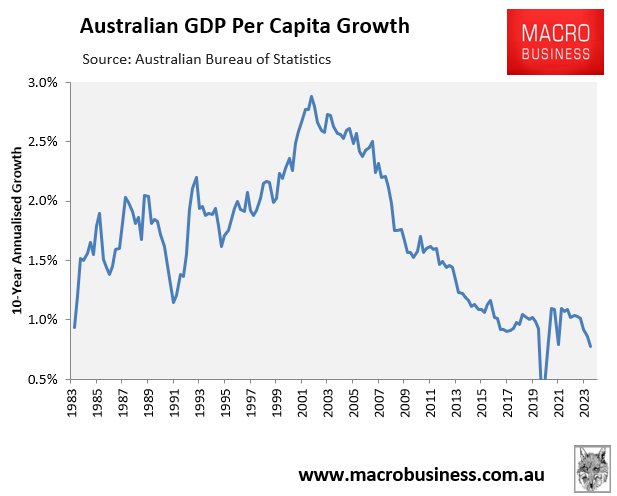
Moreover, while Australia’s official unemployment rate remains low, thanks to the expansion of the NDIS, forward-looking indicators imply that labour supply is expanding far faster than demand, resulting in a steep decrease in job vacancies and a sharp increase in job applicants.

Canada should serve as a harsh warning of what will happen if Australia continues to pursue the same high immigration paradigm.
This growth strategy has demonstrably failed in both nations and must be scrapped as a matter of urgency.

